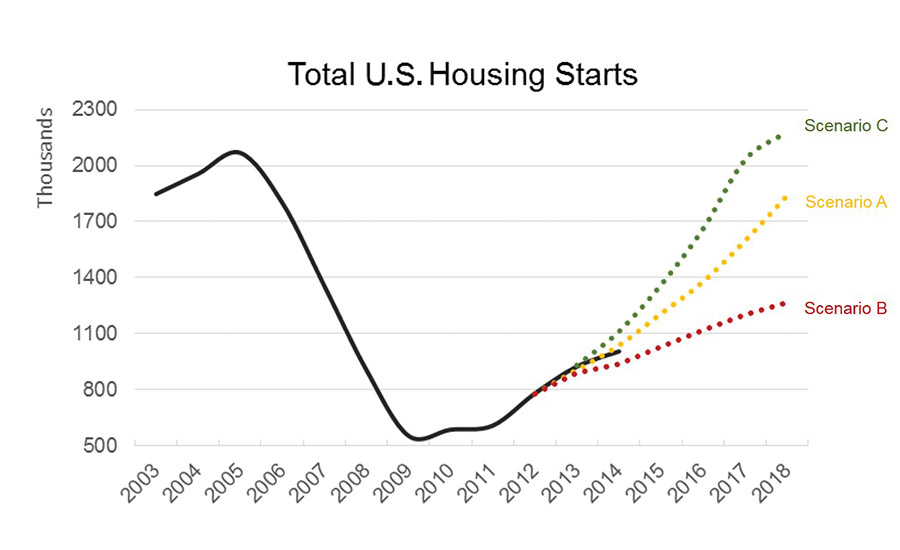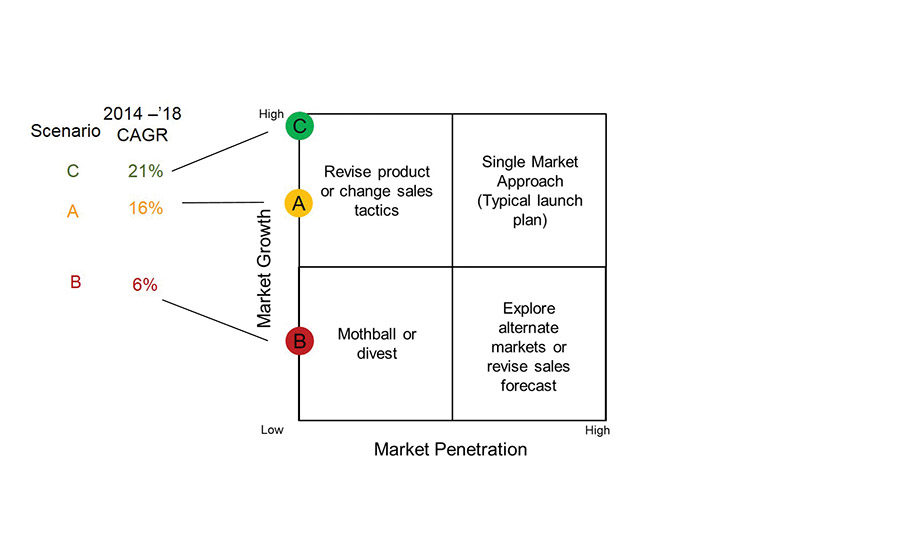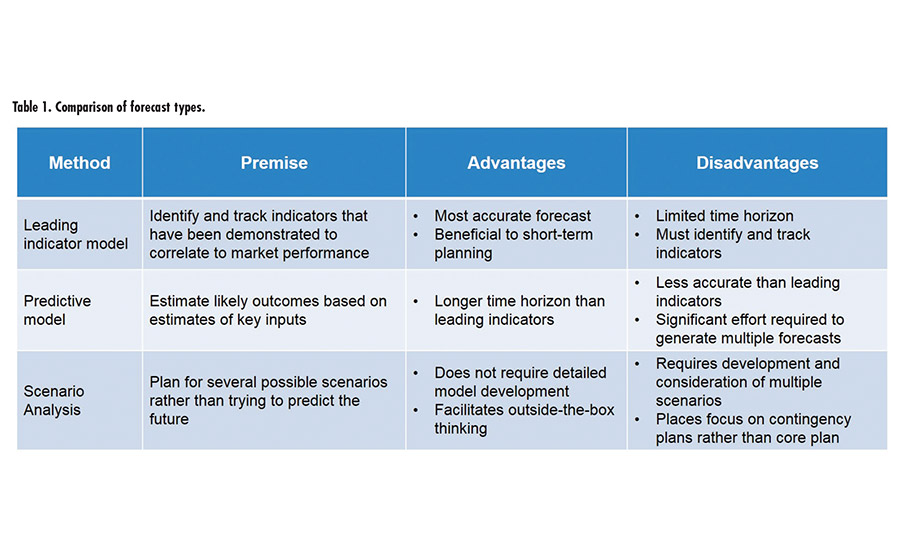Linking New Product Strategy and Tactics with Forecasts
Forecasting techniques and other approaches can be used to integrate new product strategy into everyday operations.








Forecasting is an essential part of many business processes, including new product planning and development. Forecasts of future sales are used to justify investment and resources for new product development. However, product planning forecasts are often not integrated into operations or revisited after the product is launched. This creates a disconnect between strategy and tactics, causing many companies to fail to recognize when it is time to implement tactical shifts in the marketplace in order to achieve desired strategic outcomes.
Strategy vs. Tactics
The terms “strategy” and “tactics” both refer to plans and actions intended to produce a desired result. However, important distinctions exist between the two. Strategy refers to long-term, “big-picture” planning, while tactics refer to the specific actions taken to drive the strategy. Think of strategy as deciding where to go and tactics as determining how to get there.
Strategy must therefore be decided first and lead tactical decision-making, but the two have an interdependent relationship. Market conditions and responses to tactics should be monitored; this feedback should then be used to determine when changes in tactics or strategy are required. Both tactics and strategy must evolve based on business realities.
Types of Forecasts
Three types of forecasting tools are commonly used for new product planning: leading indicators, assumption-based predictive models and scenario planning. These approaches are most effectively used in conjunction with one another, as each has strengths and limitations (see Table 1).
Leading indicators are simply economic data that tend to change prior to the factor under study. For example, housing starts are commonly used as a leading indicator for construction materials, such as adhesives, sealants and coatings. More sophisticated models can be constructed using multiple leading indicators to forecast a product line or business. Leading indicators are the most accurate of the indictors discussed here, but since the time lag between the dependent and independent variables is fixed, this is a tool for short-term forecasting, such as sales and demand planning for the next few quarters.
Predictive models are extensions of leading indicators, and can be used to make multi-year forecasts by using estimates for the independent variables in a leading indicator model. Although this extends the time horizon of the forecast, these models are generally less reliable than leading indicators, as the accuracy of the forecast depends on the correlation of the variables and the quality of the assumptions. In addition, there is typically a good deal of data that needs to be collected and analyzed to generate the forecast, particularly if multiple scenarios are being considered.
Scenario analysis requires companies to consider and plan for a number of possible market outcomes. It can be used to evaluate assumption-based predictive models, or to introduce a more comprehensive array of potential futures without the burden of detailed models. The benefit of this approach is that it forces companies to develop plans for a variety of possible outcomes that might otherwise go unexplored. However, scenario analysis is focused on contingency planning, so it may divert the product development team’s efforts away from the core business plan for a new product.
Forecast Accuracy
Regardless of the methodology used, all forecasts represent an attempt to predict an uncertain future. Thus, it is important to recognize that forecasts are unlikely to be entirely accurate, particularly when one attempts to forecast for multi-year periods. The goal when creating forecasts should be to minimize error, since it cannot be eliminated. In fact, in a review of 52 firms forecasting U.S. residential construction growth for a one-year period (2014 vs. 2013), the forecasts average was 20% growth, which was about 2.5 times above the actual growth rate that year.1 This is not meant to be an indictment of forecasts, but rather to serve as a warning to use them with caution.
Companies that recognize the limitations of forecasts and use them as one of many tools to guide decision making—rather than the one and only tool—are best-positioned to reap benefits from them. It is also a good practice to establish an owner of forecasts, who can be responsible for auditing forecasts and suppliers regularly to determine if they are appropriately accurate and make adjustments when necessary.
Linking Strategy to Tactics
These forecasting methodologies have complementary strengths and weaknesses; thus, it is best to use them in conjunction with each other, rather than to rely on one approach exclusively. For example, companies focused only on leading indicators for short-term demand planning may miss market shifts that do not correspond to previously established relationships. Companies that conduct only scenario analysis may have excellent contingency plans, but lack the market awareness to anticipate market changes and optimize operating decisions. A combination of the techniques discussed here creates the best opportunity to link strategic planning and tactical execution.
Developing a new product strategy typically begins with assumptions regarding how the target markets for the product will grow over several years. This is accomplished through the use of market forecasts or predictive models. Predictive models have the advantage of allowing the product planning team to consider multiple probable cases for market growth. An example is shown as Figure 1, which shows three possible scenarios for U.S. housing starts.2 Scenario A, considered to be the most likely case, shows 16% compound annual growth from 2014-2018, and is the case on which the business plan would most likely be built. Scenarios B and C, the pessimistic and optimistic cases, are built on reasonable assumptions of housing growth drivers. It is good practice to determine how each of these plausible cases would affect the timing of investment to support growth, which would include a review of the manufacturing and staffing plans.
At this point in the process, the product planning team will have considered the most plausible market outcomes, but they likely have not considered all possible outcomes. Scenario analysis can be used to bridge this gap. Figure 2 shows how three different scenarios for housing starts might be positioned on the market growth axis of the scenario planning matrix. Note that the market growth scenarios from the model (those considered most plausible) do not correspond to the lowest point on the market growth axis of the scenario analysis. It may be beneficial for the team to consider what would happen in the case of a prolonged stagnation or significant market contraction, however unlikely these outcomes might be. The addition of scenario planning requires teams to consider action plans for less-than-ideal market growth or product acceptance, which can lead to more robust launch plans and will often help uncover new threats and opportunities.
Once all relevant scenarios have been evaluated, milestones can be identified to use as signposts for guiding strategy and tactics. Many metrics, such as housing starts, can be reported on a monthly basis, and the team can examine trends or use leading indicators to determine if the market performance is consistent with the forecast. Regularly reporting market metrics and associating them with milestones provides transparency and helps set expectations with management regarding new product demand. This helps avoid reputation-damaging surprises, which can occur if a project is substantially ahead or behind plan.
Figure 3 shows the use of leading indicators to track market trends against planning scenarios for housing starts. In this case, with market currently trending toward the pessimistic scenario, a more conservative, lower investment path to market could be selected. Conversely, should the market trend sharply upward, it could be a signal to accelerate hiring or investment to speed commercialization.
Best Practices
Forecasts are a powerful tool that can provide significant benefits in new product planning and post-launch operations. To make the most effective use of forecasts, it is important to keep the following points in mind:
• Forecasts are not 100% accurate or reliable. Best results will be achieved when common sense and good judgement are used during data interpretation and application.
• Forecasting techniques have different strengths and weaknesses; using a combination of techniques yields the best results. Assumption-based predictive models can be used to develop multi-year growth scenarios, which can be tracked and monitored by tracking economic indicators. Scenario planning can be used to identify less obvious eventualities.
• Creating clear ownership of forecasts, which includes acquisition (or generation) and regular auditing, ensures that forecasts will be evaluated and improved over time.
• Adopting practices that incorporate the previously mentioned points enables companies to have robust new product strategies, and will create a link between strategy and operations by providing tools and information to recognize when tactical or strategic shifts are necessary.
For more information, contact the author at mbenevento@industrial-market-insight.com or visit www.industrial-market-insight.com.
Editor’s note: This article is based on a paper given at the Adhesive and Sealant Council’s Spring 2015 Convention and Expo in Nashville, Tenn.
References
1. Based on data collected by Prevedere Inc.
2. U.S. construction growth scenarios based upon “The Demographic Shift From Single-Family to Multifamily Housing,” Jordan Rappaport, Kansas City Federal Reserve, 2012.
Looking for a reprint of this article?
From high-res PDFs to custom plaques, order your copy today!












